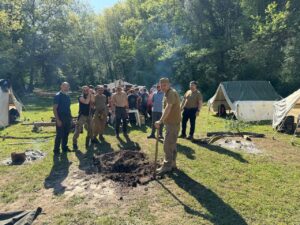These are the keywords & basic content of Federal courses, to be considered an abstract of the knowledge needed for FISSS oriented lessons:
1. OUTDOOR: ad ventura, i.e. the challenging of forthcoming events into the wild; physical and psycho-emotional autonomy in eco-dynamic contexts.
Definition of Outdoor Sports: leisure motor activities, cognitive, experience-based, experimental, difficult or extreme, practiced in non-protected natural environments, in autonomy and with minimum equipment, with spirit of adventure and in eco-dynamic ways: eco-dynamic is a neologism for a synergic and reciprocal relationship between sports and the environment; it stresses the concept of eco-compatible/sustainable with a closer interaction between human fitness and the environment’s one, finalised to the safeguard of both the person and the relevant environment.
2. RISK ASSESSMENT: cost-benefit x probability x emotionality and principles of caution.
The cost-benefit in the Outdoor action is the pragmatic convenience and evaluation of time, energy and resources investment (cost) in order to obtain the primary goal of surviving (benefit), related to risk (probability x consequences x error x emotional responses x optimism or removal; the preventive principles of caution are positive paranoia (before), operative confidence and ease (during) and resilience (after). In Survival risks are real, in Surviving there are only training and/or simulations in safe sports.
3. SEVEN SURVIVAL RULES: for 3 minutes, 3 hours, 3 days, 3 weeks, 3 months; equation of terror, fears and phobias.
On average, you can stay 3 minutes without breathing, 3 hours without heat, 3 days without water, sleep or orientation, 3 weeks without food, 3 months without company. The equation of terror is uncontrollability + unfamiliarity + imaginative potential + suffering + destructive level + injustice. Fears are positive and reversible, being alarm bells and signs of response to the unknown. Phobias are negative, being uncontrollable and permanent with anxiety reactions as a result of antecedent traumas; in the brain they respond to the functions of the amygdala and hippocampus (motor for primary emotion, conditioning positive/negative memory and behaviour connected to human evolution and ancestral genetic conditioning); they trigger the sympathetic – alert- and parasympathetic – rest-and-digest – systems by releasing specific hormones like cortisol, adrenalin, etc. We can say that fears are a transposition of the intellect in the emotional mode, but they are not pathologic like phobias.
Resilience is a positive response to stress, i.e. to physical, psychological, environmental or social pressure on an organism; all trainings may be seen like ‘preventive stress inoculations’: indeed “what doesn’t kill you makes you stronger”. The term ‘resilience’ comes from the Latin resalio, meaning the return to the condition antecedent the negative stress (distress) by means of a positive stress (eustress) stimulated by a ‘passionate’ or experimental choice favouring the resistance to fatigue and discomfort, or by a behaviour defined heuristic reactance: an emotional reaction against a restriction on freedom with the aim to re-establish it and discover new results, productive and unexpected.
Ex-aptation (a term due to the evolutionary palaeontologist Stephen Jay Gould) is different from common adaptation (a status conversion due to environmental pressures); ex-aptation adopts a reconversion strategy of pre-existent improper resources, co-opted and reused for a different goal compared to original functions (for example: in the beginning, bird plumage was only a homoeothermic structure, eventually ex-apted for flight). This is a basic point in Survival, simply defined as ‘improvisation’. A useful behaviour is adopted to solve social complexity and activate cooperation; that means adopting an ‘economic intelligence’ according to the economist Carlo M. Cipolla who wrote a diagram of 4 categories of actors: the rare mutual intelligent and the diffused hetero/self-destructive stupid (incompatible), sided by the bandit and the naïve (mutually incompatible, but compatible with the other two actors). The overall objective is to pursue and achieve a tiring but useful intelligence.6. ECONOMY OF RESOURCES: minimum equipment and gear for autonomy, considering 6 double edged variables: 1. Body & Heat, 2. Environment & Adaptation, 3. Knowledge & Communication, 4. Transfer & Transport, 5. Utility € Usability, 6. Simplicity & Singularity, i.e.: be comfortable, stay fit, alert and intelligent, communicate, move, make, be unique.
7. BIBLIOGRAPHY: as a complement and follow-up, to be chosen in the international arena according to interests and updated scientific validity.

